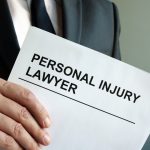Introduction
A head-on collision is one of the most dangerous and life-threatening types of car accidents. The impact is usually severe because both vehicles are traveling toward each other, often at high speeds. Victims often suffer catastrophic injuries, property damage, and emotional trauma that can change their lives forever. If you or a loved one has been involved in a head-on crash, knowing your legal rights and compensation options is essential. This guide will walk you through what causes these accidents, the steps to take afterward, your legal protections, and how to maximize the compensation you deserve.
1. Understanding Head-On Collisions
A head-on collision occurs when the front ends of two vehicles collide while moving in opposite directions. Common causes include:
- Distracted driving (texting, phone use).
- Drunk or impaired driving.
- Fatigue or drowsy driving.
- Wrong-way driving on highways.
- Unsafe passing on two-lane roads.
Because of the force of impact, head-on crashes are far more likely to result in serious injuries or fatalities compared to other types of accidents.
2. Common Injuries in Head-On Collisions
Victims of head-on accidents often experience:
- Traumatic brain injuries (TBI)
- Spinal cord injuries leading to paralysis
- Broken bones and fractures
- Internal bleeding and organ damage
- Whiplash and soft tissue injuries
- Psychological trauma such as PTSD
These injuries not only require immediate medical attention but also long-term treatment, which makes fair compensation critical.
3. Legal Rights After a Head-On Collision
If you’ve been injured in a head-on crash caused by another driver’s negligence, you have specific legal rights:
- Right to Compensation: You may recover damages for medical bills, lost wages, pain and suffering, and future medical care.
- Right to File a Lawsuit: If the insurance settlement is unfair, you can take your case to court.
- Right to Legal Representation: You are entitled to hire an attorney to protect your interests.
- Right to Seek Justice for Wrongful Death: If a loved one died in a head-on collision, family members can file a wrongful death claim.
4. Who Can Be Held Liable?
Determining liability in head-on collisions often requires investigation. Possible liable parties include:
- The other driver (if they were distracted, impaired, or reckless).
- Vehicle manufacturers (in cases of mechanical failure).
- Government entities (if poor road design or lack of signage contributed).
- Employers (if the at-fault driver was operating a company vehicle).
A personal injury attorney can help identify all responsible parties to maximize your claim.
5. Compensation You May Be Entitled To
Compensation in head-on collision cases can include:
- Economic Damages
- Medical expenses (current and future)
- Lost income and reduced earning capacity
- Property damage
- Non-Economic Damages
- Pain and suffering
- Emotional distress
- Loss of enjoyment of life
- Punitive Damages
- Awarded in cases of gross negligence, such as drunk driving.
6. Steps to Take Immediately After a Head-On Collision
Taking the right steps can protect both your health and your legal case:
- Seek Medical Help: Even if injuries seem minor, get checked.
- Call Law Enforcement: Get an official police report.
- Document the Scene: Take photos of vehicles, injuries, and surroundings.
- Collect Information: Exchange contact and insurance details with the other driver.
- Avoid Admitting Fault: Statements can be used against you.
- Contact a Personal Injury Lawyer: Early legal guidance strengthens your claim.
7. Role of a Personal Injury Lawyer
An experienced attorney will:
- Investigate the accident and gather evidence.
- Consult accident reconstruction experts.
- Negotiate with insurance companies.
- File a lawsuit if necessary.
- Represent you in court to secure maximum compensation.
Hiring a lawyer ensures you are not pressured into accepting a low settlement.
8. How Long Do You Have to File a Claim?
Every state has a statute of limitations for personal injury and wrongful death cases, usually ranging from 1 to 3 years. If you miss this deadline, you may lose your right to compensation. A local attorney can explain the specific rules in your state.
9. Proving Negligence in Head-On Collisions
To win compensation, you must show that the other driver acted negligently. Evidence may include:
- Police reports
- Eyewitness testimony
- Traffic camera or dashcam footage
- Medical records
- Expert testimony
Strong evidence builds a strong case.
10. Preventing Head-On Collisions
While you can’t control others on the road, you can take precautions:
- Avoid distractions.
- Never drive under the influence.
- Stay alert on two-lane highways.
- Rest if you feel drowsy.
- Always wear a seatbelt.
Conclusion
A head-on collision can change your life in an instant, leaving you with injuries, financial hardship, and emotional scars. But you don’t have to face this battle alone. Knowing your legal rights and compensation options is the first step toward recovery. With the help of a skilled personal injury attorney, you can hold negligent parties accountable and secure the financial support needed for medical care, lost income, and a better future. Don’t wait—take action today to protect your rights and rebuild your life.


